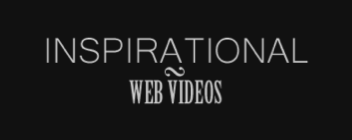START your project with Post.
(so we don’t have to “fix it” later)
“Oh we’ll just fix that in Post.”
“Oh we’ll just fix that in Post” …Those are 7 of the most famous words in all of media production. Whatever happens in the field, it doesn’t matter, those technical wizards in the darkened rooms with computers galore can make it absolutely perfect. And that IS true if you have an endless budget, we can pretty much fix and create anything your heart desires. But as I’m sure many of you don’t have an endless budget, there is often a more cost effective solution.
Get Post Production involved right from the beginning of the project. Seems when most folks get a project started they call together everyone necessary to make it happen EXCEPT post production. It’s like the Post isn’t important even though that’s where your project is going to end up and be finished.
First off, in today’s digital world, solid media management is paramount to any project. When you erase your digital card / hard drive / storage device you’re using in the field, that data is gone forever. In post production, we’re used to managing a tremendous amount of data for any given project so we can help establish a solid data management workflow from file naming convention down to storage and archiving the data so everything you shoot is protected. If you simply shoot the project and walk into a Post facility with a bunch of drives, the first thing you’re going to pay for is someone to go through and organize the entire project into something manageable.
Not to mention one of the biggest issues we run into is lack of complete camera data. This happens constantly when we receive raw camera data from the field and at the very least you can lose timecode and at worst loss of picture or audio or both. It’s so important to transfer the digital camera data correctly for the type of camera you’re using or information will simply get lost between the field and Post. There’s nothing more frustrating for a Producer than having hours upon hours of footage that all starts at timecode 00:00:00:00 from Reel 001 and trying to give notes to the editor. Get Post involved at the get-go and you can be better prepared from the moment you walk in the door.
Getting the editors, graphic designers, animators, sound designers and even colorists involved from the beginning can also add a lot more creative input on your project. When you share your vision and plan for your project, very often those who will finish the show can share some insights on projects they’ve recently completed, ideas to make your project different, additional camera angles and shots and so on. Post artists can also help determine what’s better to shoot practical in the field or create digitally later. In other words, starting with post production can oftentimes lead to a much better end product and certainly help you to get the most bang for your budget.
So while we’ll never be able to completely eliminate the classic “Fix It In Post” problem, if you bring Post Production into your project from the start, we can help create a smoother workflow, less headaches, and more creative end product.
- - - - - -
Article by Biscardi Creative







 Post a Comment
Post a Comment







